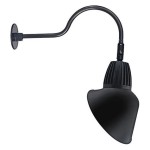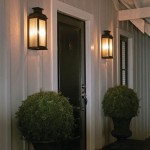Outdoor Building Facade Lighting: Illuminating the Night Sky
Outdoor building facade lighting transforms the architectural landscape, enhancing the aesthetic appeal of structures and creating a captivating ambiance after dark. This article delves into the essential aspects of outdoor facade lighting, providing insights into its benefits, design considerations, and technical requirements.
Benefits of Outdoor Facade Lighting
Facade lighting offers numerous advantages, including:
- Architectural Enhancement: Illuminating a building's facade accentuates its design features, highlighting its architectural details and creating a visually striking spectacle.
- Enhanced Security: Well-lit buildings deter criminal activity by increasing visibility and creating a sense of safety.
- Attracting Attention: Purposeful facade lighting draws attention to a building, making it more noticeable and increasing foot traffic.
- Brand Identity: Lighting can be customized to reflect a building's brand image, creating a recognizable and memorable landmark.
Design Considerations
Designing an effective facade lighting scheme involves several key factors:
- Building Architecture: The lighting design should complement the building's architectural style and enhance its features.
- Purpose: Consider the intended purpose of the lighting, whether it is for aesthetic enhancement, security, or branding.
- Light Distribution: Determine the desired light distribution pattern to achieve uniform illumination or accentuate specific areas.
- Color Temperature: Select the appropriate color temperature to create the desired atmosphere, from warm and inviting to cool and modern.
- Energy Efficiency: Prioritize energy-efficient lighting solutions to minimize operating costs and environmental impact.
Technical Requirements
To ensure optimal performance and longevity, facade lighting systems require proper technical specifications:
- Luminaire Selection: Choose fixtures that meet the required light output, beam angle, and durability for outdoor conditions.
- Power Supply: Determine the necessary power supply and wiring infrastructure to meet the wattage requirements of the lighting system.
- Control Systems: Consider control systems such as timers, sensors, and dimming capabilities to adjust lighting levels and create dynamic effects.
- Maintenance: Establish a maintenance plan to ensure regular cleaning, lamp replacement, and system updates to maintain optimal performance.
Conclusion
Outdoor building facade lighting is an integral part of modern architecture, enhancing the beauty of structures and creating vibrant urban environments. By understanding the benefits, design considerations, and technical requirements, lighting designers can create captivating and effective facade lighting schemes that transform the night sky into a work of art.

Idea For Façade With Outdoor Lighting Ligman

Idea For Façade With Outdoor Lighting Ligman

What Is Facade Lighting Importance Of Wipro

Idea For Façade With Outdoor Lighting Ligman

Idea For Façade With Outdoor Lighting Ligman

Architectural Home Facade Lighting For Bungalow

Led Façade Lighting Design Concepts Architecture

Murphy Lightings

Outdoor Lights S Of Led Luminaires Polish Manufacturer Kluś Design

5 Commonly Used Outdoor Wall Facade Lighting Grnled
Related Posts







